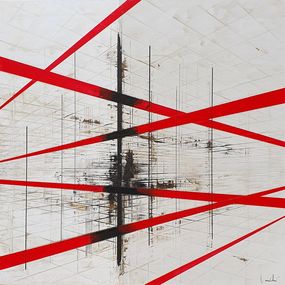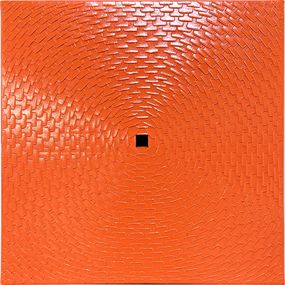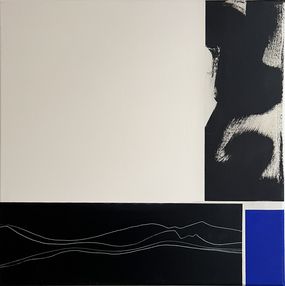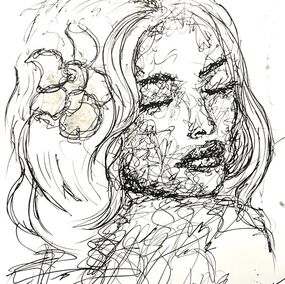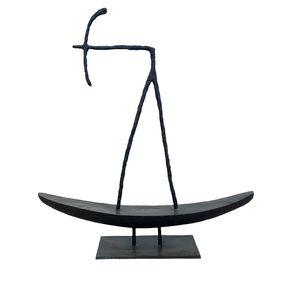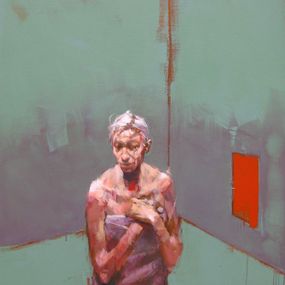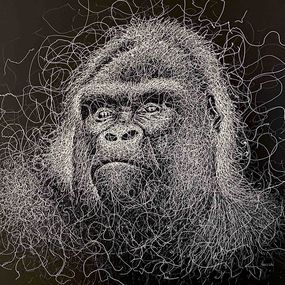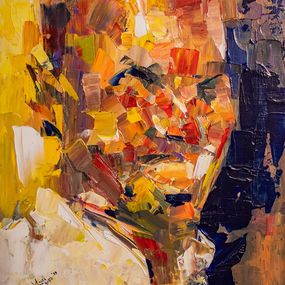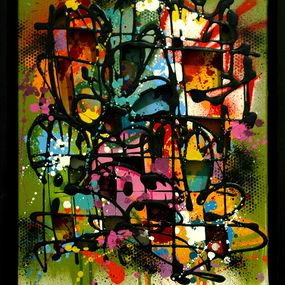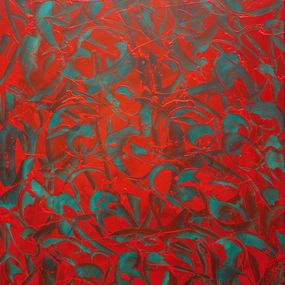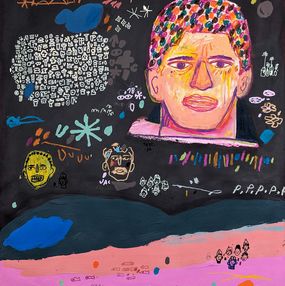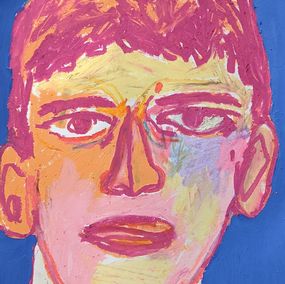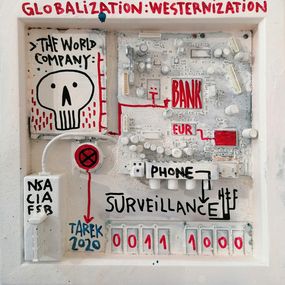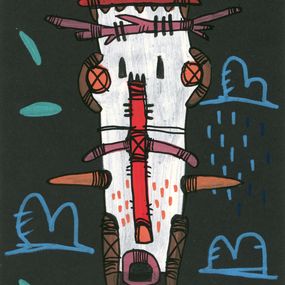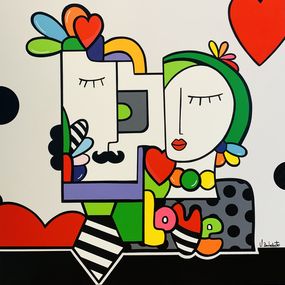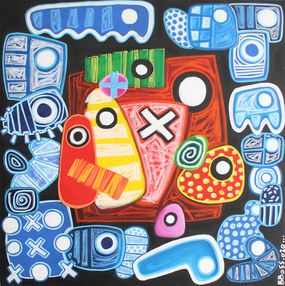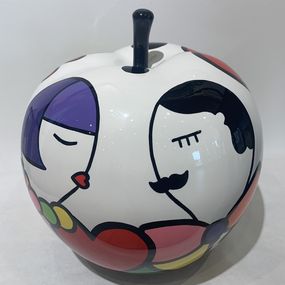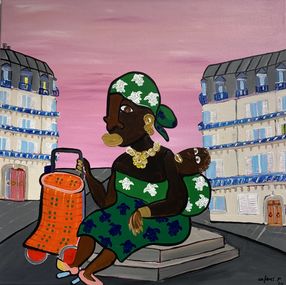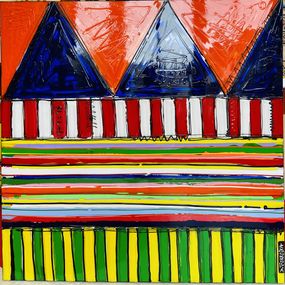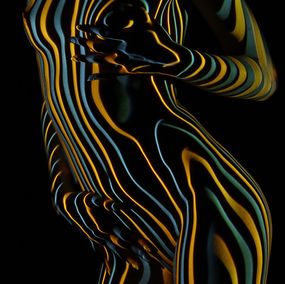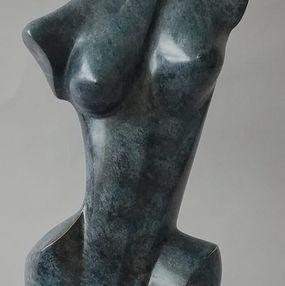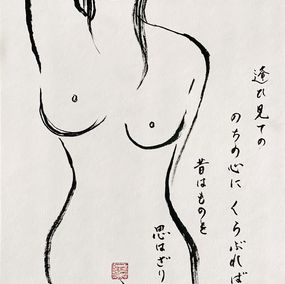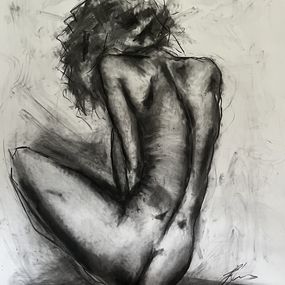Query
Category Painting
Artist Gabrielle Rul Elizabeth Becker Jérôme Mesnager Milburn-Foster Marian Williams Joanna Glazer Laurent Anastay-Ponsolle Dasha Pogodina Dzovig Arnelian Harry Ergott Pascal Marlin Kristina Malashchenko Tetiana Pchelnykova Alexander Levich Zafi Isabelle Hirtzig Alexandre Moore Rockefeller Amandyne Steropês Aurélie Trabaud Eric Doisy William Mountgoaten Carmen Tyrrell Celso Castro Anastasia Kurakina Le Hai Linh Lilit Soghomonyan Olena Siniuhina Artur Soletskyi Emilie Teillaud Linet Andréa R. Cavalié Liubou Sas Laurent Proneur Vasyl Khodakivskyi Oriol Texidor Robert Combas Hildegarde Handsaeme Benjamín Lafuente Stephanie Larène Stanislav Bojankov Oswin Gesselli Eulogia Merle Aimée De Courtozé Anton Isabelle Lebret Mario Henrique Tsanko Tsankoff Corné Akkers Agnieszka Staak-Janczarska Mikhail Baranovskiy Witold Pyzik Marcos Rodrigo Irakli (Akuna) Kavtaradze Anand Manchiraju Françoise Leblanc Marie Deforche Zakhar Shevchuk Rebecca Yunjeong Lee Pierre Sojo Andrea Vandoni Stavri Kalinov Antonio Feltrinelli Derek Overfield Robert Walker Catherine Clare Joann Côté Ramaz Chantladze Nadezda Stupina Gatien Mabounga Socrate Alice de Miramon Xavi Figueras Catherine Rafenberg Anthea Missy Jean-Paul Bocaj Christian Jodin Reza André Guillarmain Inga Makarova Igor Shulman Anna Bukhareva Katia Baron Rakhmet Redzhepov (Ramzi) Isis Bi-M Spaco Lisbeth Buonanno Dominika Kock Maï Fougeront Yigit Dundar Alexander Daniloff Kurt Mair Etienne Gros Ghylan Safadi Hastaire Claude Gean Magenta LN Enriqueta Aguiló Stefano Mazzolini CY Pavel Dimitar Voynov - Junior
Color Beige Red Sky blue Dark blue Pink Yellow brown Grey Black Green White orange Purple Navy blue golden Silver
Orientation Portrait Landscape Square
Medium acrylic oil watercolour mixed media collage ink pastel aerosol paint canvas Indian ink oil stick charcoal paper marker pencil Posca gouache Pigments tempera Stencil Textiles gold leaf wood linocut resin lacquer stained glass paint digital art natural pigment gold Water colored pencil Acrylic binder cardboard enamel print plaster airbrush painting photo photo transfer Watercolor ink sand tinted varnish graphite mine chalk walnut stain inkjet lead mine digital print Knife Painting glue ballpoint pen pierre noire pigment ink aluminium silver leaf dyes ceramic newspaper C-print metal glass silver cotton found object embroidery thread sequins steel aquatint vinyl cement feathers metal leaf Fine art paper textile braiding lace assemblage leather stone plastic brick mirror etching Crystal Tables mosaic nail bank note artwork Butterfly screen Digital Painting Genuine stock certificate clay wax fiberglass lithography neon digital iron
Theme Nude Portrait Figurative Everyday life Abstract artworks Street art Fantastic Pop Art Animal Floral Art brut Landscape Conceptual Eastern Art Still Life African artworks Under Water Seascape Architecture Graphic Geometric Music Sport Religious Icons Urban Landscape Black and white Garden Fashion Political and historical Comics Food Vehicles Minimalism Vanity Mountain landscapes From the sky Cinema Tribal art Aboriginal art Decorative objects Monumental Wall sculpture
Support canvas paper wood Arches paper watercolor paper cardboard Fine art paper Linen cardboard + canvas board Canson paper Wood Dibond paper mounted on canvas Fabriano paper aluminium cotton paper MDF textile Genuine stock certificate burlap plexiglass handmade paper Poster steel mirror plastic metal kraft paper Hahnemuehle fine art paper newspaper foam ceramic found Object Masonite glass slate vinyl graph paper cork gypsum fiber polyester canvas bank note resin feathers plaster Plexiglas box Road Sign Postal Card
Thematic At home with Chairish Women by Women Inspired by Matisse Inspired by Klimt Inspired by Schiele Bath Time Inspired by Auguste Renoir Inspired by Mythology The Best of our British Galleries Inspired by Art History A Pop Art Interior Love in Art Hyperrealism Inspired by Art Nouveau After Dark Contour Line Art of Antiquity Inspired by Francisco de Goya Mood: Calm Summer Holidays Diversity Art and Tolerance Art Inspired by Cubism Inspired by Sandro Botticelli Inspired by Jan van Eyck Children in Art Mood: Mysterious Pattern Play African Art French Street Artists The Art of Celebration Inspired by Paul Gauguin Pantone Color of the Year 2023 At home with PAMONO Inspired by Basquiat Springtime Unusual Supports Vamos a la Playa Fantastical Beasts Inspired by Frida Kahlo A State of Dreaming Works Inspired by the Four Elements Ready-to-Hang Artworks Autumn Collection Industrial Interior Tropical Touch Baroque Interior Mediterranean Interior The Spirit of the Seventies Impasto Inspired by Tracey Emin Inspired by Giorgione Crush of the Month: Our Team's Favorites in February Inspired by Manga Inspired by the Renaissance Inspired by Parenthood Pixel Art Crush of the Month: July Fashion-Inspired Works Curated by Artsper: A Trip to the Caribbean Crush of the Month: September Crush of the Month: November 24 Artists to Watch in 2024 Pantone Color of the Year 2024 Golden Touch Art & Anthropomorphism Inspired by Pop Art Warm Colors Inspired by Magritte Graphic Arts Typography in Art Sweet Dreams Loft Interior Art Déco Interior Cozy Chalet Interior Inspired by Pointillism Pride Art States of Matter A Natural Interior Glitch Aesthetic Utopia Gift Guide for the Life of the Party Inspired by Rembrandt Pantone Color of the Year: 2022 Curated by Artsper: Our Latest Additions Curated by Artsper: Making a Splash Inspired by Leonardo Da Vinci Curated by Artsper: Our Favorites of Fall 2021 Curated by Artsper: The Charm of the Strange Curated by Artsper: Sit Back, Relax… Inspired by Diego Velázquez Inspired by Camilla d’Errico Inspired by Peter Doig Inspired by James Ensor Cats and Dogs Inspired by Fernand Léger The Garden Party Inspired by Sonia and Robert Delaunay Crush of the Month: Our Team's Favorites in April Inspired by Naturalism Images of the West Coast
Tag Human body Women Colors Men Figuration back Girl Fictional Character Expressionism colorful Semi-abstract Characters Silhouette Femininity Erotic Faces Surrealism Couple People Breasts Sensuality Love Illustration Beach Graffiti Lady Dancer Mythology Humans Cartoons Birds Sexuality Cubism Swimsuit Trees Impressionism Sea Hyperrealism Abstract art Composition Hair Plants Dancers Sky Realism Vintage Interior scene Pattern Dream Cats Pop Culture Interior Swimmer Hands Night Lingerie Dance artworks Angel Status of Women Holidays Model Kiss Children Wall Sex Leaf Figuration libre Abstract expressionism Venus Paris Movement Muscles Psychedelic Wild animals Art History Diptych Artworks Neo-surrealism Clouds Adam and Eve Africa Urban art Horses Summer Lines Picasso Anatomy Aquatic Artist studio Botany Vietnam Self-portrait Blue Bed Landscape Imaginary landscape Sleep Anthropomorphism Swimming pools artworks Surrealism Pop Sun
Price
Size Medium (< 45 x 45 inch) Large format Small (< 20 x 20 inch) Very small (< 10 x 10 inch) Very large (> 80 x 80 inch)
Selection Artworks by best-selling artists New & remarkable Artists Young Talents Our recommendations Special offers Artworks by famous artists Master Artists
Movement Abstract Portrait Artists Naïve Artists Top Selling Young Artists of the Year Life Portrait Artists Rich and colorful figurations Dreamlike Characters Somber Portrait Painters Bright and Colorful Figurative Works Pop Culture Street Artists Famous Street Artists Figurative Pop Artists Colorful Cubist Portraitists Figurative Collage Poetry of the Natural Form Playful Street Art Abstract Motion Neoclassical portraits Contemporary Feminist Artists Figurative Street Artists Cubism Surrealist Artists Free Secession Free Figuration Post-Impressionism Avant-garde artists African Aesthetic Contemporary Women Surrealists Naïve-Style Illustrations Classically-Inspired Illustrative Artists Fine line Human form Artworks Famous Collage Artists Hyperrealism Abstract Sketches Semi-abstract Landscape Artists Lively Life Scenes Die Brücke Experimental Painters Famous Illustrators Gestural abstraction Contemporary Still Life Basquiat-style Artists Abstract Expressionnism Black Artists Painters Narrative Figuration Colorful Minimalist Patterns Classic Portrait Artists Fauvism Swathes of Color Neo-expressionism Expressionism Classic landscapes in cold colors Detailed Somber Illustrations Der Blaue Reiter Lyrical Abstraction Minimalism Poetic Landscapes Abstract Explorations South American Art Abstract Artists Working in Earthy Tones Paintings with Classical Charm Suprematism Colorful Pop Sculptors Poetry of Daily Life Satirical street artists Solitary Panoramas Abstract Landscape Artists Contemporary Urban Landscapes Colorful Flat Illustrations Ghostly Calligraphies LGBTQ+ Artists Erotic Pop Art Meaningful Typographies Art Nouveau Drawings with Organic Forms Colorful Geometric Painters Colorful Floral Compositions Accumulations of Building Facades Joyful and Colorful Compositions Arte Povera Op' Art Somber Abstract Painters Abstract Japanese Art Emerging Black Artists Magic Realism Ancient Inspiration Islamic Art Inspired by Cave Painting Precisionism Emerging Asian Artists Chiaroscuro Landscape architecture De Stijl Classical painting revisited Digital Artists Abstract Street Art Elegant Botanical Paintings Environmental Artists Tropical Style Japanese-Inspired Flowers Black and White Portraits
Art fair Art Paris 2024
Height
Width
Page
Nationality French artists American artists Spanish artists Ukrainian artists British artists Italian artists Bulgarian artists Dutch artists German artists Polish artists Russian artists Belgian artists Armenian artists Swiss artists Georgian artists Canadian artists Vietnamese artists Austrian artists Chinese artists Bolivian artists Lebanese artists Japanese artists Colombian artists Czech artists Argentinean artists Brazilian artists Nigerien artists Syrian artists Belarusian artists Portuguese artists Israeli artists Greek artists Australian artists South Korean artists Romanian artists Turkish artists Norwegian artists Filipino artists Swedish artists Indian artists Iranian artists Congolese artists Latvian artists Thai artists Indonesian artists Icelander artists Venezuelan artists Albanian artists Ecuadorean artists Ghanaian artists Guadeloupian artists Lithuanian artists Mexican artists Moldovan artists SouthAfrican artists Ivorian artists Haitian artists Cameroonian artists Burmese artists Beninese artists Chilean artists Malian artists Slovakian artists Serbian artists Bangladeshi artists Cuban artists Guinean artists Macedonian artists SaoTomean artists French Polynesian artists Irish artists SriLankan artists Sudanese artists Tunisian artists Emirian artists Algerian artists Azerbaijani artists Mongolian artists Moroccan artists Peruvian artists Puertorican artists Senegalese artists Taiwanese artists Angolan artists Djibouti artists Cypriot artists Hungarian artists Kenyan artists Maltese artists Monacan artists NewZealander artists Pakistani artists French Réunion artists Uzbekistani artists
Sort
Universe
